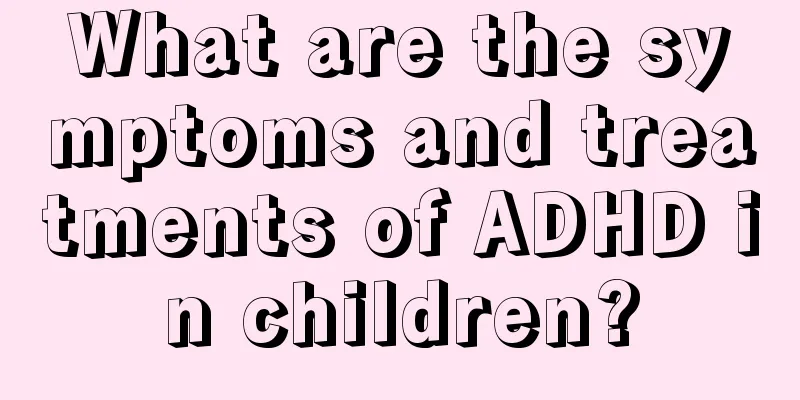How to treat anemia in children?

|
Once a child has anemia, parents are very worried about their child's physical development at this time, because many children with anemia do not like to eat. If they do not like to eat, the child will not grow, and the body will not have nutrition. This is a disease that has a great impact on children. For children's anemia, many parents will choose to blindly treat it. This will not only cause great harm to the child, but also cause the child to be infected with many diseases due to poor immunity. So what should children do with anemia? Depending on the degree of anemia, there will be different treatment plans clinically. Therefore, the treatment methods for anemia are also diverse in clinical practice. Experts say that in order to better understand anemia, we should further explore the treatment options for anemia in different situations. Next, let’s take a look at the treatments for anemia. Eight scientific treatments to fight anemia 1. Drug treatment: Avoid abusing blood-enriching drugs and strictly master the indications of various drugs. For example, vitamin B12 and folic acid are suitable for the treatment of megaloblastic anemia; iron supplements are only used for iron deficiency anemia and cannot be used for non-iron deficiency anemia because they can cause iron overload and affect the functions of important organs such as the heart, liver, and pancreas. 2. Regulate immunity: adhere to the principle of treating both the symptoms and the root causes, adjust the body's immune function, achieve the effects of nourishing yin and clearing heat, purging fire and detoxifying, cooling blood and stopping bleeding, thereby reducing the production of negative regulatory factors of hematopoiesis and relieving the inhibition of bone marrow hematopoiesis. 3. Improve hematopoietic microenvironment: The main pathogenesis of aplastic anemia is a decrease in bone marrow hematopoietic cells, so improving hematopoiesis has the effects of invigorating qi and blood, promoting blood circulation and removing blood stasis, warming the kidney and spleen, increasing the patient's bone marrow colony stimulating factor and bone marrow stromal cells, improving the hematopoietic microenvironment, and promoting the generation and development of hematopoietic cells. 4. Blood transfusion: The main advantage of blood transfusion is that it can quickly reduce or correct anemia. Therefore, the indications for blood transfusion must be correctly understood. If a large amount of blood transfusion is required, concentrated red blood cells can be transfused to reduce the overload on the cardiovascular system and reduce transfusion reactions. This is also one of the ways to treat anemia. 5. Repair hematopoietic stem cells: By consuming Chinese herbal medicine, you can promote the proliferation of hematopoietic stem cells, increase the activity of the body's cells, and thus achieve the effect of nourishing the spleen and kidneys, and ultimately repair hematopoietic stem cells by regulating the body's immune system. 6. Hematopoietic stem cell transplantation: For patients with severe β-thalassemia, if there is an HLA-matched hematopoietic stem cell donor, hematopoietic stem cell transplantation is recommended, which is expected to achieve a cure. 7. Red blood cell transfusion: Patients with intermediate α and non-severe β thalassemia can receive a small amount of red blood cell transfusion, while patients with severe β thalassemia should be given medium to high amounts of transfusion from an early stage. Concurrent iron chelation therapy can prevent hemosiderosis. 8. Bone marrow transplantation: It is still in the research and trial stage. It is mainly used for patients in the early stages of acute aplastic anemia who have not received blood transfusions or have received very little blood transfusions. If the transplant is successful, the patient may be cured. This is a measure to treat anemia. The above are all good methods that can be used to treat children’s anemia. When children are anemic, they must be given more blood-enriching foods. Such foods are the greatest help for children’s anemia. If children are anemic, they must also pay attention to their mood and avoid children having serious picky eating habits. If so, they must develop good eating habits so that their anemia can be improved to a certain extent. |
<<: What to do if your child is zinc deficient?
>>: What are the symptoms of vitiligo in children
Recommend
Can children eat chestnuts?
Chestnut is a very good food and many people like...
Why does my child sweat a lot when sleeping?
What happens when a child sweats profusely while ...
What to eat for children with allergic cough
We all grew up eating whole grains, so some disea...
How to treat baby heat bumps
The physical health of infants needs attention, b...
How should I educate a rebellious two-year-old baby?
When the baby is two years old, he will experienc...
Commonly used drugs for treating diarrhea in children
Children often eat without paying attention to th...
The difference between umbilical cord protection and umbilical cord protection stickers
Umbilical cord protectors and umbilical cord stic...
What should I do if my baby cries at night after weaning?
It is very difficult to wean a breastfeeding baby...
What to do with oral herpes in children
The incidence of oral herpes in children is relat...
Why does my two-month-old baby not like to laugh?
Many parents are very worried. Why don’t their ba...
What to do if your child has bubbles in his throat
Bubbles in a child's throat is a symptom of p...
How to relieve hoarseness in newborns
In fact, parents attach great importance to the c...
Can scarlet fever heal on its own?
Generally, scarlet fever is not easy to heal on i...
Why do three-year-old babies suck their fingers?
It is normal for babies to suck their fingers whe...
What should children eat if they are deficient in calcium, iron and zinc?
Nowadays, because parents are busy with work and ...









